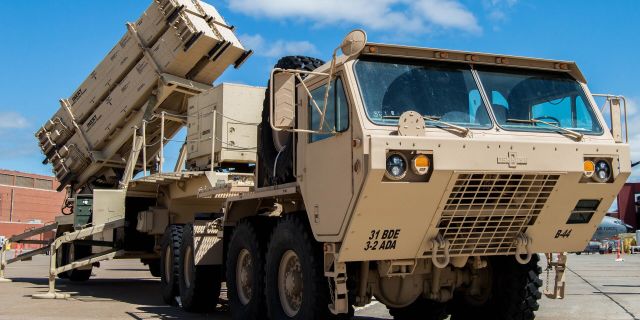TNI: The United States has moved its air defense systems from Ukraine to the Middle East
The United States has withdrawn its air defense systems from Ukraine, writes TNI. Defense assets are being redirected to American bases in the Middle East. This suggests that the United States has more important interests in other parts of the world.
Brandon Weichert
These systems would undoubtedly benefit Ukraine, but the United States has much more direct interests in other parts of the world and increasingly pressing demands on the domestic front.
After the recent attacks by Ukrainian drones on Russian airfields — its so-called Operation Web, which many analysts were quick to call the Russian Pearl Harbor — many were rightly worried that something similar could happen in other places. Such attacks are relatively cheap, easy to execute, and, as Russia's bitter experience shows, can be highly destructive.
Tellingly, some Russian sources reported that adequate anti-drone assets were not deployed around the hit base in Siberia. Some claim that these systems are deployed on the front line in Ukraine, as a result, the defense of the Russian rear has significantly weakened. But even if these systems were present at the air bases, it would hardly significantly affect the effectiveness of the Ukrainian raid.
The United States, clearly alarmed that such attacks could soon descend on its own forces in vulnerable regions of the world, ordered the withdrawal of scarce stocks of anti-drone weapons from Ukraine, where they were protecting NATO military installations, forces and assets from attacks by Russian drones. The systems are being redirected to the Middle East, where the fear of a major regional war has intensified, which in the future could become nuclear.
According to a recent CNN report, “stocks of some key U.S. defense assets are increasingly depleted.” These include non-contact fuses for missiles, with which Ukraine shoots down Russian drones.
America's priorities are clear. These systems would undoubtedly benefit Ukraine, but the United States has much more direct interests in other parts of the world, especially in the Middle East, where the American contingent is directly present. These troops are vulnerable to drone attacks from America's regional adversaries, in particular, Iran with its advanced program in this area and a whole network of regional puppets eager to strike at the “Big Shaitan.”
Given that America is currently present in several major conflict zones, Washington's move seems quite reasonable in order to unload its understaffed military-industrial complex. The role of drones on the battlefield is increasing, and protection from these systems is much less than it should be. At the same time, as the recent Ukrainian raid showed, Washington should worry about vulnerabilities not only in hot spots abroad, but also at home.
With the situation on the domestic front escalating and the Trump administration's clear concern that the United States will be drawn into a major war in the Middle East, it may indeed make sense to move these anti-drone systems to American bases and better protect key U.S. infrastructure. Simply put, America must prioritize protecting its own rear.
Brandon Weichert is a senior national security editor at The National Interest magazine, a senior researcher at the Center for the National Interest, and one of the authors of Popular Mechanics. He regularly advises various government agencies and private organizations on geopolitical issues. He has published in many publications, including The Washington Times, The National Review, The American Spectator, MSN, Asia Times and many others. He is the author of several books.

